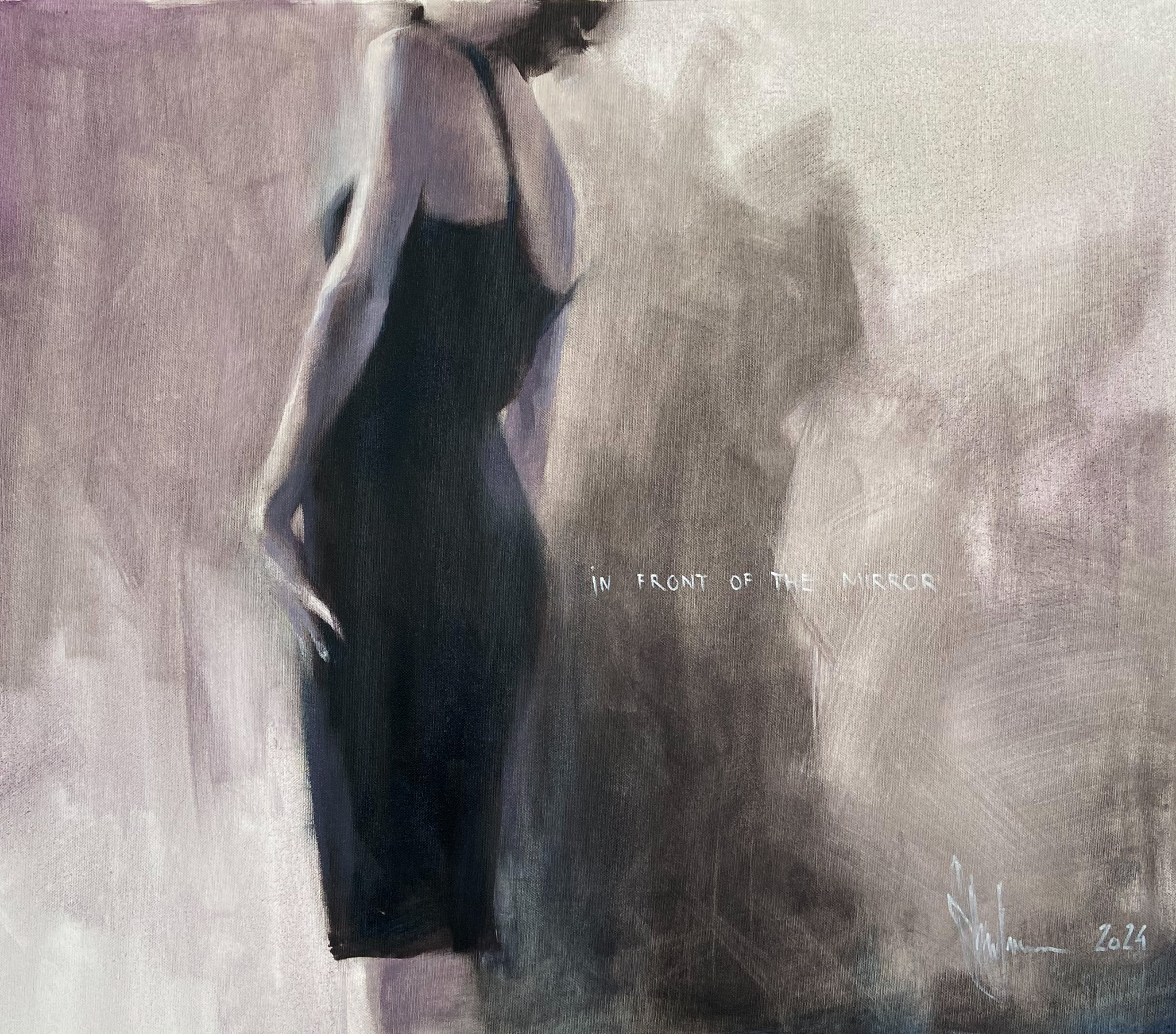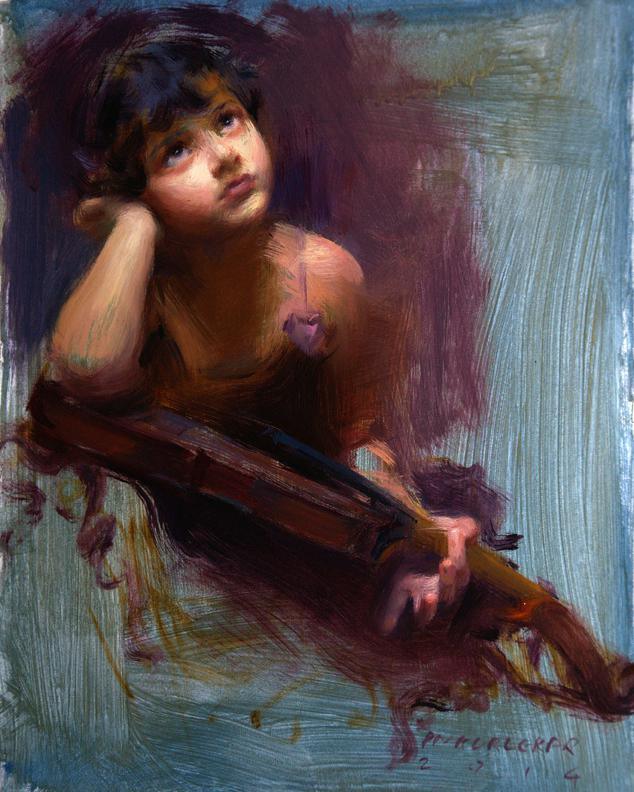Revealing the Tricks Behind Expressive Figurative Oil Painting Styles
Revealing the Tricks Behind Expressive Figurative Oil Painting Styles
Blog Article
The Development of Metaphorical Oil Painting: Comprehending Its Historical Significance and Modern Interpretations
The advancement of figurative oil paint serves as an engaging lens through which to take a look at the interplay in between artistic expression and historic context. Contemporary musicians, drawing from this abundant heritage, are now reinterpreting the human figure in means that challenge standard narratives.
Origins of Figurative Oil Painting
The beginnings of figurative oil painting can be mapped back to the early Renaissance in Europe, especially in the 15th century. This duration marked a considerable separation from the level depictions and rigid types particular of middle ages art. Artists began to discover naturalism, emphasizing the human figure and its psychological expression. The growth of oil paint enabled higher deepness of shade and detail, improving the realistic look and vibrancy of their job.

In this transformative age, figures were frequently depicted within contextually rich settings, showcasing not just their physical qualities however likewise their psychological states. Pioneers such as Jan van Eyck and Titian used the tool's convenience, using layering methods to accomplish luminosity and texture. This technology promoted the portrayal of elaborate textiles and the nuances of skin tones, adding to the development of portraiture and narrative scenes.
Additionally, the Renaissance focus on humanism promoted a recognition for individuality, which in turn affected artists to develop more relatable and vibrant figures - figurative oil painting. As an outcome, figurative oil paint became an effective car for narration and emotional engagement, laying the foundation for future artistic activities and styles
Trick Historical Activities
Significant historic activities have actually formed the development of metaphorical oil paint, each contributing distinct approaches and strategies that broadened the medium's opportunities. The Renaissance noted a zero hour, highlighting realism and the human kind, with musicians like Leonardo da Vinci and Michelangelo pushing the borders of anatomical precision and perspective. Following this, the Baroque age brought significant contrasts of light and shadow, exemplified by Caravaggio, that infused religious styles with extreme emotionality.
The 19th century introduced Romanticism and Realism, where musicians such as Delacroix and Courbet tested classical suitables, concentrating on individual expression and day-to-day life. The advent of Impressionism additionally changed the medium by emphasizing the impacts of light and shade, bring about a departure from conventional depiction.
In the very early 20th century, activities like Expressionism and Cubism redefined figurative painting through abstraction and the exploration of psychological deepness. Each of these activities not just mirrored the societal changes of their times however likewise prepared for contemporary analyses. The interplay between these historical movements has produced a rich tapestry of styles and approaches, affecting modern-day musicians in their search of recording the human experience on canvas.
Strategies and Products Advancement

Throughout the Baroque period, strategies such as chiaroscuro and sfumato emerged, boosting the emotional resonance of metaphorical compositions. Musicians began to trying out glazes and impasto, adjusting structure and luminance. By the 19th century, advancements like making use of pre-mixed paints in tubes reinvented ease of access, permitting artists to paint en plein air and record the fleeting results of light.
The 20th century saw the intro of synthetic pigments and tools, which expanded the combination and modified the consistency of oil paints. The exploration of brand-new application techniques, such as palette blades and brushes look at here of differing stiffness, additional varied imaginative expression. Collectively, these developments mirror the evolving connection in between products, techniques, and the imaginative vision intrinsic in figurative oil painting.

Contemporary Analyses
Contemporary analyses of metaphorical oil painting reflect a dynamic dialogue in between tradition and advancement, where musicians challenge developed norms and discover diverse styles. This evolution materializes in different methods, as contemporary artists blend classical strategies with modern-day principles, often addressing social, political, and individual stories.
Lots of professionals draw motivation from historical jobs, yet they instill their pieces with contemporary perspectives, making use of the human kind as an automobile for commentary on sex, identity, and culture. Artists significantly trying out abstraction, distortion, and multimedias, which permits a wider interpretation of the number and its context.
Moreover, making use of brilliant color schemes and unique compositions often offers to disrupt typical checking out experiences, provoking essential interaction from audiences. This change in focus expands beyond aesthetics; it shows a growing recognition of the complexities of human experience in an interconnected globe.
As figurative oil painting proceeds to develop, it continues to be an important tool for exploring the subtleties of contemporary life, symbolizing both a regard for heritage and a commitment click now to modern thought. The result is an abundant tapestry of expression that resonates with the complexities of the modern-day human condition.
Effect on Modern Art
The effect of metaphorical oil paint on modern art is profound, as it has consistently motivated a myriad of artistic motions and methods throughout the 21st and the original source 20th centuries. From Expressionism to Surrealism and past, the exploration of the human figure has stayed a main style, permitting musicians to convey complex emotions and narratives. This emphasis on figurative representation has caused a re-examination of typical strategies, causing innovative approaches that blend realism with abstraction.
Furthermore, contemporary artists have embraced figurative oil painting as a means to address social and political issues, utilizing the medium to challenge perceptions of society, sex, and identification. The renewal of rate of interest in figurative operate in current years mirrors a hoping for link in a progressively digital globe, where human experience and feeling are vital.
Furthermore, the dialogue between metaphorical oil paint and contemporary art appears in the works of musicians such as Kehinde Wiley and Jenny Saville, who make use of historic recommendations while infusing their pieces with modern significance. Ultimately, metaphorical oil painting remains to form and redefine contemporary creative expression, underscoring its long-lasting importance in the art world.
Verdict
The development of figurative oil paint underscores its historic value and versatility throughout different creative motions. From the naturalism of the Renaissance to the emotive expressions of the Baroque and the innovative strategies of modernity, this tool has continually changed. Contemporary analyses reflect vivid colors and unconventional structures, fostering essential interaction with social and political styles. Inevitably, figurative oil paint remains a crucial medium for discovering the human experience, resonating exceptionally in today's electronic landscape.
The advancement of figurative oil painting serves as an engaging lens via which to examine the interplay between imaginative expression and historic context.Significant historical motions have actually formed the advancement of metaphorical oil painting, each contributing distinct approaches and strategies that increased the tool's possibilities.As historical movements shaped the trajectory of figurative oil painting, the methods and products used by musicians have actually additionally undertaken substantial transformations. figurative oil painting.The impact of figurative oil painting on contemporary art is profound, as it has continuously influenced a myriad of creative motions and methods throughout the 20th and 21st centuries.The development of figurative oil painting underscores its historic value and flexibility throughout numerous creative motions
Report this page